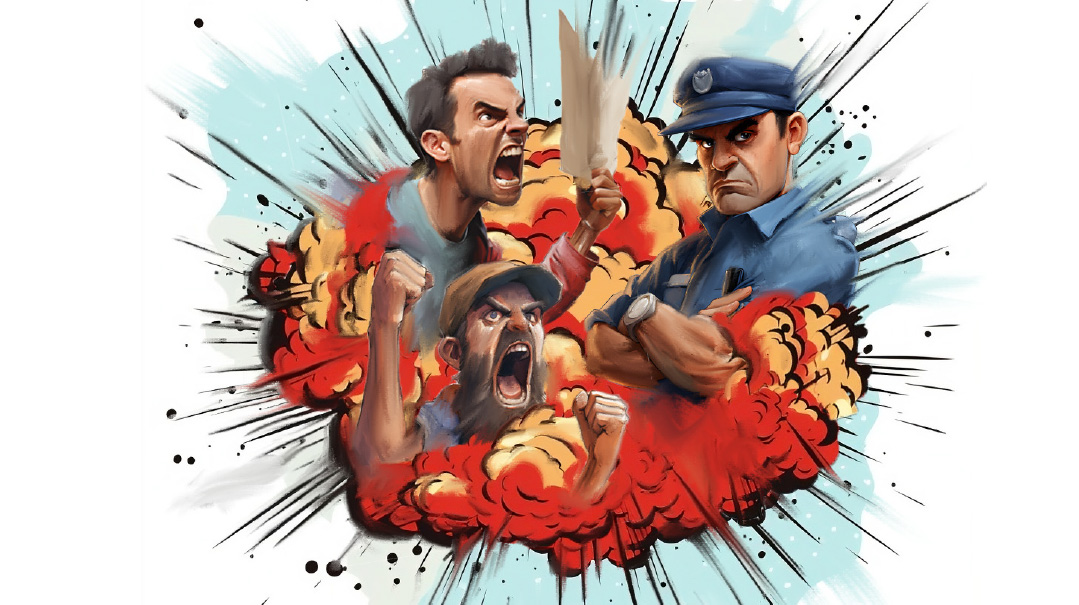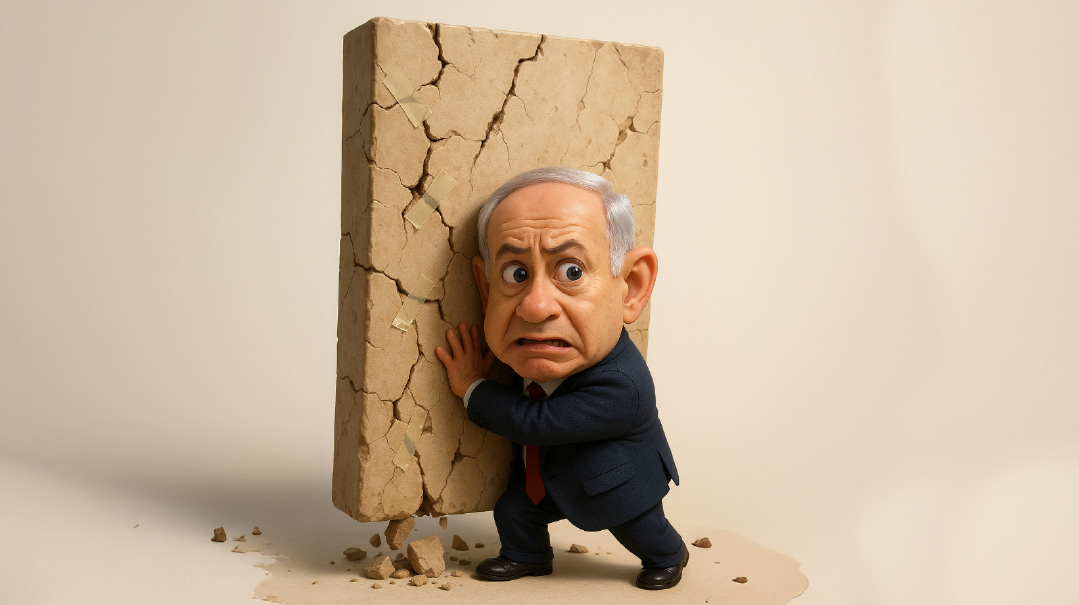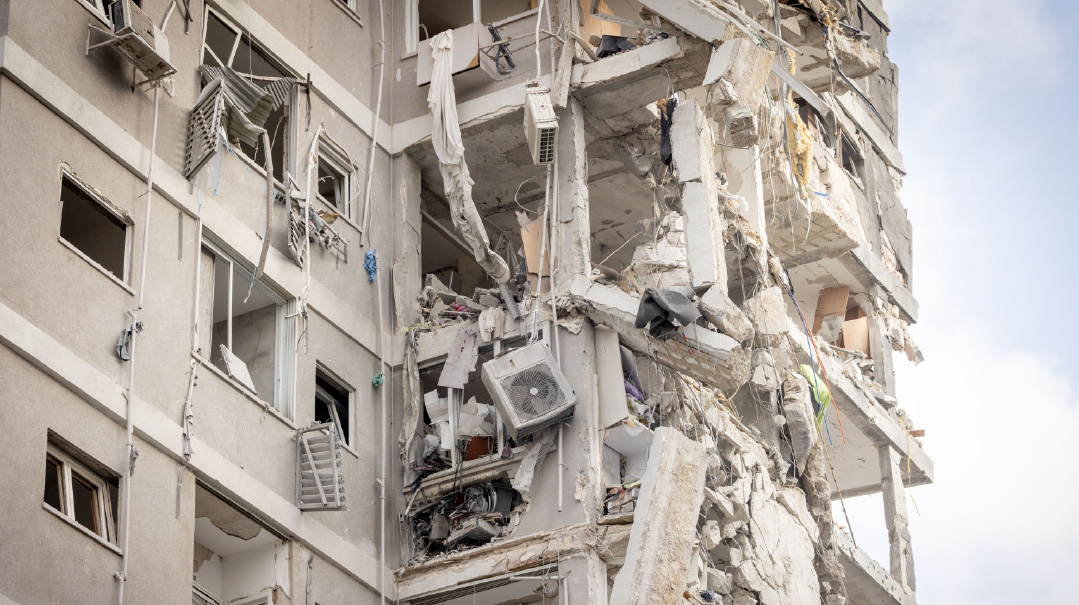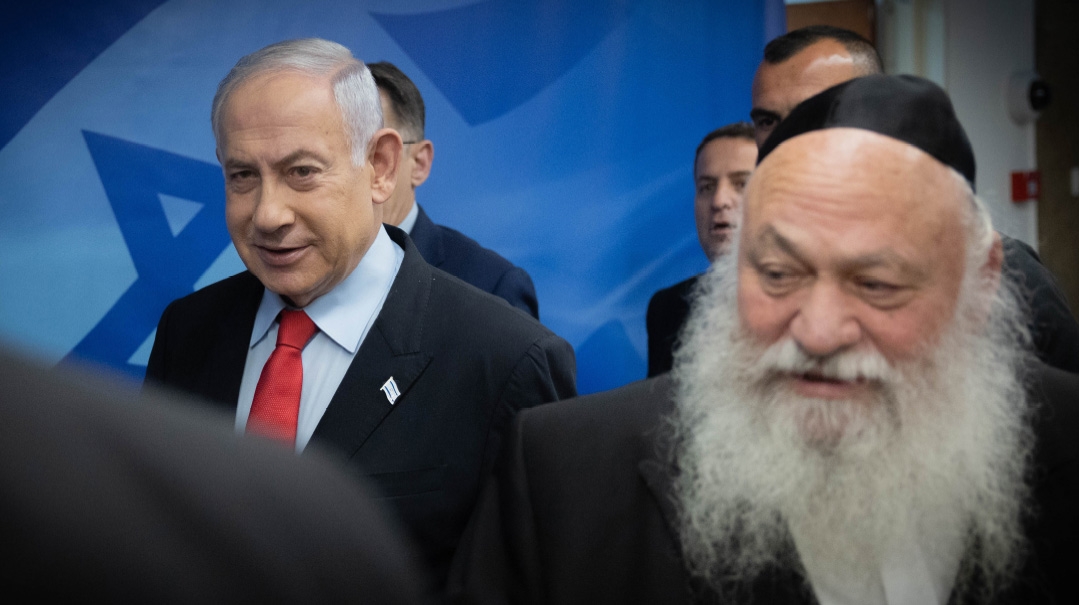Israel Averts a Capitol Riot

Israel Police snuff out riot to save Jerusalem from Jan. 6

Illustration: Sivan Schwam
1
It all happened in the blink of an eye.
The protesters lay down and pulled out “three-second glue,” intending to stick themselves to the floor at the entrance to the Knesset plenum hall. But what they hadn’t reckoned on was the Knesset Guard’s readiness. Instead of the usual pair of security guards, no fewer than 30 Knesset Guard personnel, well prepared for an Israeli version of January 6, were waiting at the entrance.
In a matter of seconds, they pounced, picking the protesters up by the arms and legs and forcibly removing them from the scene. Moments later, the floor was closed to everyone but MKs and others with entrance badges. Later that day, Chiko Edri, director-general of the Knesset and former head of the Jerusalem and Tel Aviv police districts, was able to brag, “We stood by the promises we made at the planning meetings. The Knesset won’t be the next [US] Capitol or Brazilian National Congress.”
Like the embassy of a foreign nation, the Israeli Knesset is its own separate jurisdiction. For an external policing force to be allowed into the compound, the signed approval of five figures would be required: the Knesset Speaker, the director-general of the Knesset, the Knesset legal advisor, and two Knesset Guard commanders.
That privileged status was almost disrupted this week, as the decision was made at a meeting to prepare a document that would allow special forces units to be rushed into the building in the event of unrest. That was when Knesset director general Chiko Edri showed his police background, promising that the Knesset Guard would be able to maintain order in the building on its own.
The preparations for a January 6 type of scenario didn’t start just last week, but have been ongoing for weeks. The elite background of the protest movement’s leaders forced officials to think out of the box.
“Too late, it occurred to us that those engineering the protests are veterans of the Shin Bet and special forces units, along with the most creative minds in Israeli high-tech,” a security figure told me this week in the armed fortress that was the Knesset compound.
2
With drones hovering over the capital compound, catching everything on camera, opposition members of parliament open the doors to hostile agents, who storm the legislature from within. The opposition is allowed to invite citizens to committee deliberations, but they abuse that right to help violent activists infiltrate the building, maintaining plausible deniability if caught.
That scenario wasn’t being discussed in a third-world country but rather in Israel, as part of emergency Knesset meetings ahead of the protest movement’s planned “day of disruption” this past Monday, as lawmakers prepared to pass the bill ending the reasonability standard. This was just one of the scenarios the security echelon had been preparing for over the past few weeks.
It was clear to Knesset Speaker Ohana that such a scenario would be a major PR coup for the opposition. If images of the mass protests in the streets were broadcast as evidence of popular discontent, images of the Knesset under siege would cement the perception that the Israeli government had lost control.
The Knesset Guard underwent special training alongside special forces units in the Shin Bet and the Israeli police, under supervision from security experts brought in from abroad.
The marriage between Israel’s security and technological elite that is driving the protest movement presents the greatest challenge the security apparatus has faced in a long time. The emergency meetings held in advance of the planned day of disruption this Monday were chaired by Yuval Chen, the Knesset’s Sergeant-at-Arms, a former head of the security division in the Defense Ministry and deputy director of security of the defense establishment.
Also present at the meetings were senior officials in the police and the Shin Bet, to spearhead counter-intelligence measures. In some of the meetings, security experts from abroad who had worked on similar cases — should we mention the US Capitol again? — sat in as well.
One of the men present at the meetings was Doron Turgeman, chief of the Jerusalem police district, who handled the wave of protests that erupted the night of Defense Minister Yoav Gallant’s short-lived dismissal. The police almost lost control of the situation on Gaza Street, where Netanyahu currently resides. An investigation by the police and Shin Bet would later show that the protesters who broke through the roadblocks that night came within meters of the prime minister’s front door. “Capitol,” the codeword adopted then, has been used ever since to refer to the security apparatus’s measures to keep the protests under control.
The emergency Knesset meetings also revealed just how well-connected and knowledgeable the other side was. Every protest movement name that came up during the meetings was known to at least one of those attending, and the sense was that the other side knew how to read a map at least as well the people assembled to stop them. At a certain point, those in charge had no choice but to reduce the number of meeting participants, for fear of leaks to the other side.
3
One of the few remaining islands of sanity in the Israeli political system is Knesset Speaker Ohana’s office. The fierce Bibi loyalist has somehow managed to maintain ties with every faction in the chamber, despite the chaos of the judicial reform legislation.
But last Monday, it seemed like the last unifying figure had finally lost his patience. When the Shin Bet received specific information about actors planning to storm the plenum from within, the panic levels in the Speaker’s office surged. The protesters’ big coup was supposed to be a double-headed operation, with some flooding the plenum hall and others gluing themselves to the glass in the visitors’ gallery.
Monday, always the most action-packed day in the Knesset, was especially hectic this week. With summer vacation in full swing, troops of students were there — and not to learn a lesson in good manners. In the Knesset’s large auditorium, the Speaker hosted a special conference for dozens of Chabad shluchim, with participation from MKs on both sides of the aisle. The security officials in the building recommended canceling all events, but the Speaker refused, making clear that he had no intention of surrendering to terror, and that the Knesset would continue all its activities on schedule.
At the end of the day, because of the Knesset Guard’s diligence, all the protest organizers got for their trouble was a video of their people being hauled away from the plenum entrance, without even getting a chance to use the glue they smuggled in. Before that, they were able to tour the building and post “unreasonable government” signs on the doors of right-wing MKs’ offices.
It was a cat-and-mouse game between the special forces’ former leadership and the special forces’ current leadership. The heads of the protest movement put out a red herring, leading the Knesset Guard to focus on the invitees of Labor MK Gilad Kariv, while in fact the attempted disruption was made by invitees of Yesh Atid.
Apropos Gilad Kariv, a Reform rabbi. One Knesset guard officer described the man as an anarchist, adding: “We’ve managed to fight with him, with his aides, and with his guests.” Maybe the Knesset Guard should have a few words with the chareidim who foil Kariv’s infiltration of the Kosel every Rosh Chodesh.
(Originally featured in Mishpacha, Issue 970)
Oops! We could not locate your form.







